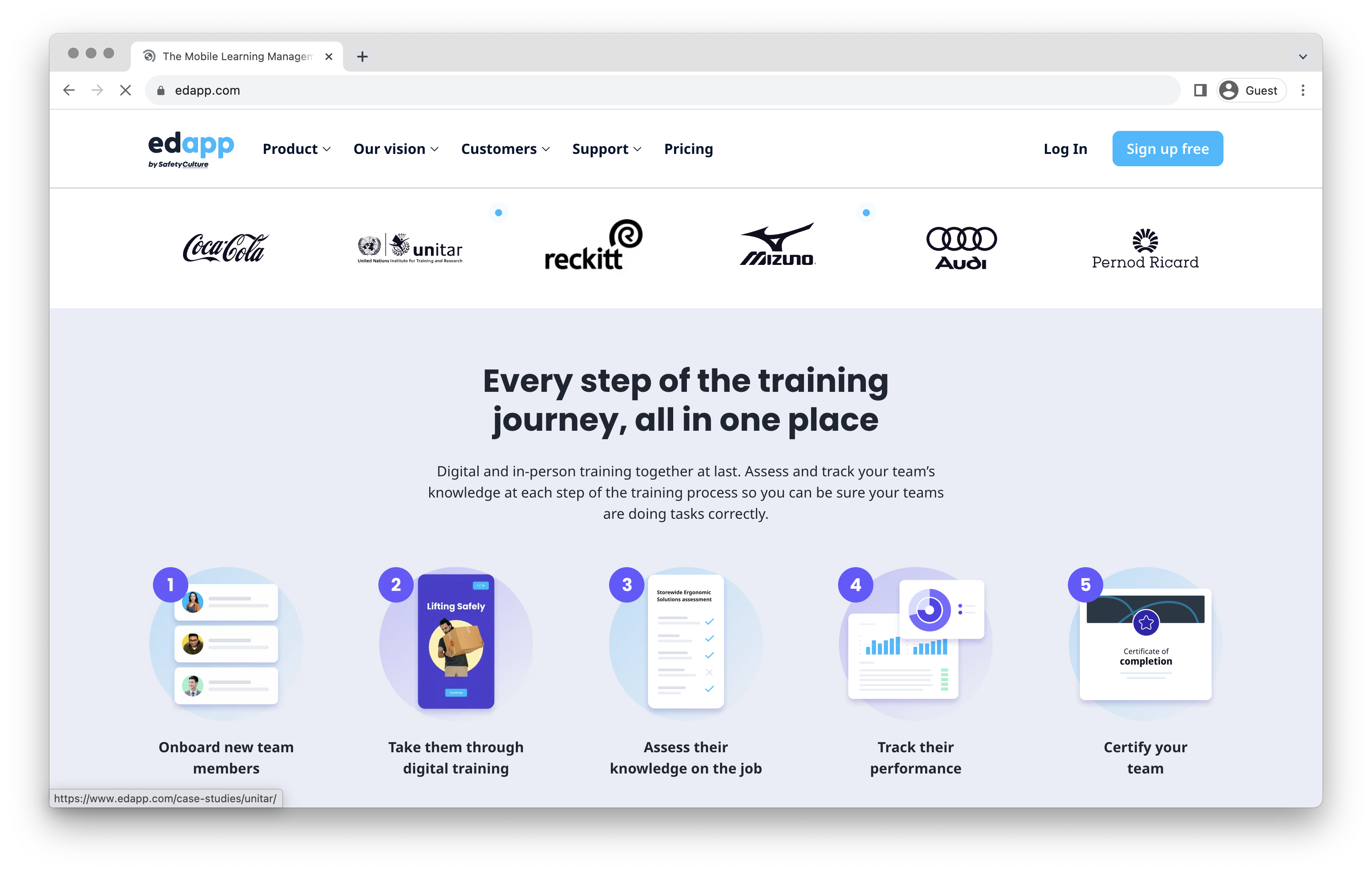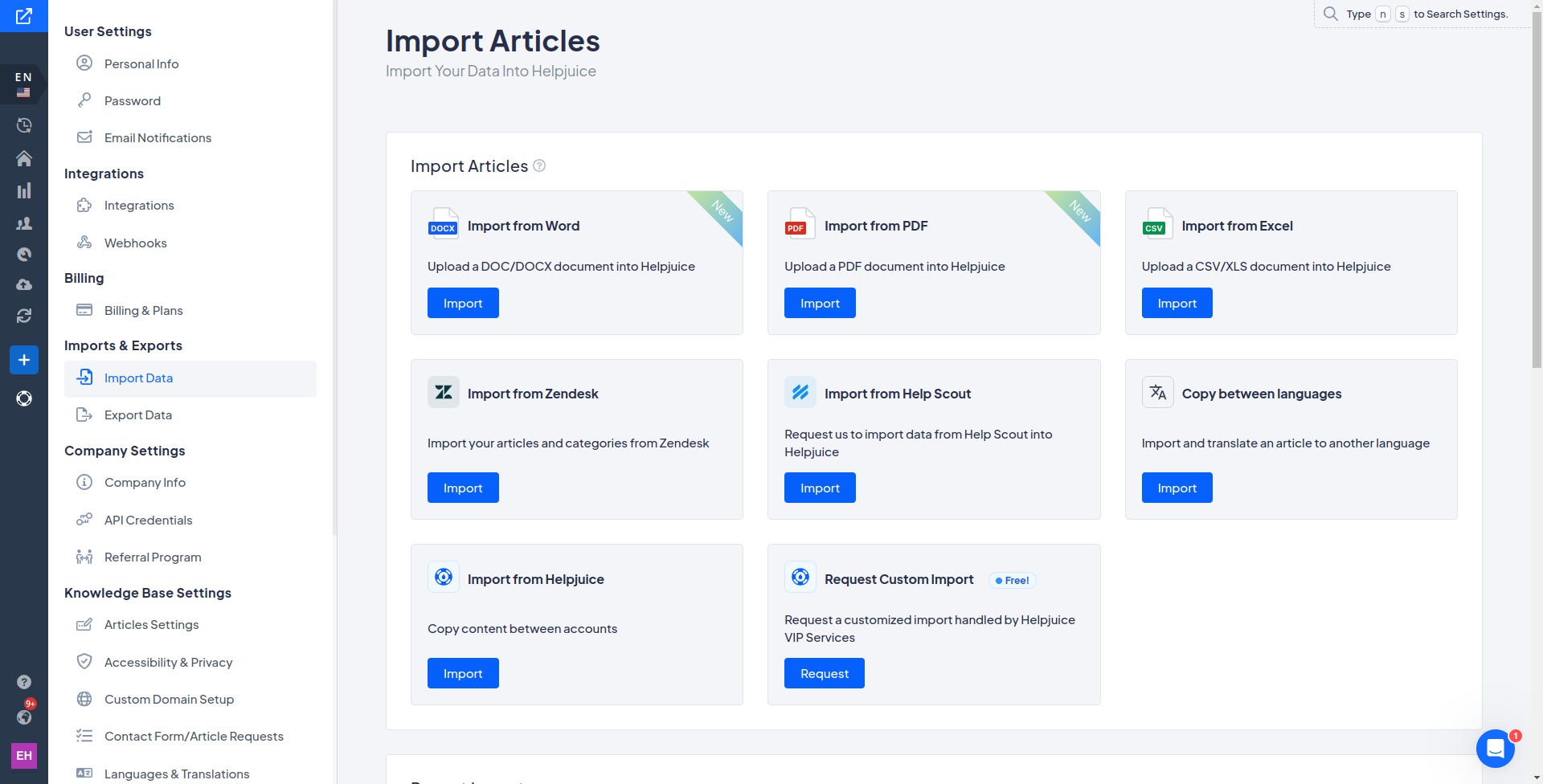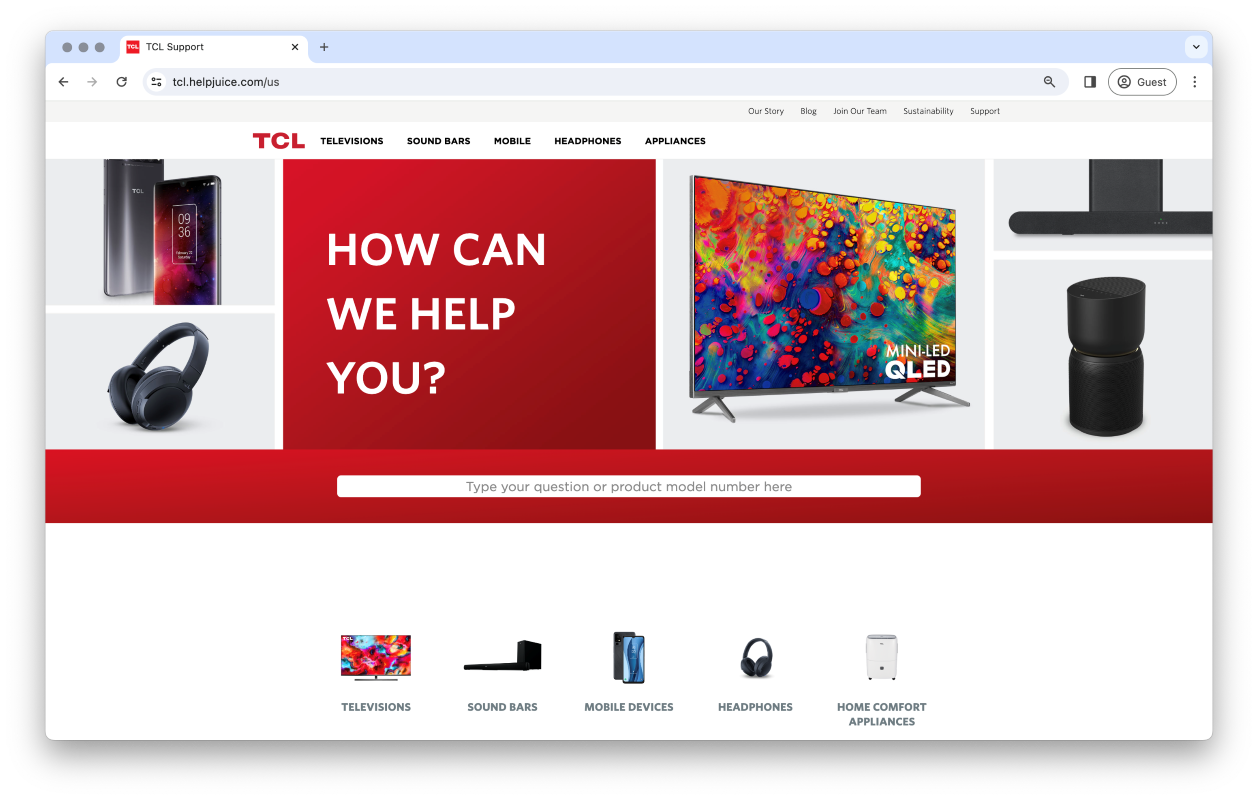Any good entrepreneur knows that traditional learning often falls short in the dynamic digital-first world of modern business. That's where microlearning comes in. Whether transferring vital tacit or explicit knowledge to your team or simplifying customer service training, microlearning is vital.
Microlearning allows you to make knowledge accessible and easily digestible. But that is not all. Microlearning boosts modern information-sharing by saving costs. Aberdeen reports that companies that use microlearning experience a 50% decrease in training costs compared to traditional training methods.
In an era where businesses lose $47 million annually due to inefficient knowledge sharing, microlearning is a breath of fresh air. And the market for microlearning is booming. Mordor Intelligence reports that this market will see a CAGR of 13.77% over the next five years.
So, it is evident how crucial microlearning tools are. Today, we delve deep into the world of microlearning, exploring its invaluable benefits, practical applications, and the best microlearning platforms available today. We take a look at the unique features and what makes the platforms stand out.
Join us, and let's begin!
Introduction to Microlearning and its Benefits
So, we'd like to go in-depth on this topic, and an excellent place to start is discussing what exactly microlearning is and highlighting some of its benefits to you.
Microlearning is a contemporary approach to education and training that emphasizes delivering bite-sized, focused content, thus facilitating quick learning experiences.
Evidently, the focus here is to compress extensive information and reduce the potential overwhelm to learners.
Today's world is fast-paced, and attention spans are getting shorter. By presenting information in small, manageable chunks, complex concepts can be learned in a matter of minutes. Microlearning thus ensures knowledge retention while catering to the rapidly diminishing attention spans of modern learners.
Characteristics of Microlearning
As discussed earlier, microlearning differs from traditional learning. But how different is it, exactly? Well, at the heart of microlearning are a few defining characteristics that set it apart from traditional learning.
First, it is succinct. Microlearning emphasizes conciseness and impact.
Second, it is modular. Each microlearning unit stands alone, independent of others. Learning paths are, therefore, flexible.
Third, it is engaging. It typically leverages multimedia. Videos, quizzes, infographics, and other features are present for deeper learner engagement.
Essentially, microlearning is designed for the modern mind. You can thus expect a more engaging learning experience where the information is very digestible and the content is designed with flexibility in mind.
Why Microlearning is Relevant for Your Organization
We live in an age where it is not uncommon for people to experience information overload. Think of the typical business or office scenario where employees and customers are constantly bombarded with volumes of information. This could be through SOPs, user manuals, or various other forms of content. The traditional extensive formats can make learning or accessing necessary information a daunting task — frequently leading to confusion and inefficiencies.
Microlearning emerges as the solution for efficiency and accessibility in these busy environments. It breaks down the monolithic manuals and procedures into digestible, focused segments. It facilitates learning experiences and makes things less overwhelming, more engaging, and incredibly suited to the fast-moving business environment. Customers and employees alike assimilate and retain essential information faster.
Benefits of Microlearning in Modern Business
By now, you already have a hint of some of the benefits of microlearning. But let's go a little deeper. Microlearning offers a plethora of advantages to businesses looking to stay agile and competitive in today's shifty landscape. Microlearning transforms information-sharing and comes with the following benefits to your organization:
- Cost-effective: As previously mentioned, businesses save up to 50% of development costs with microlearning. Unlike traditional training methods that can be resource-intensive, microlearning is often more budget-friendly, reducing the expenses linked to content creation and distribution.
- Time-saving: Recent data shows that microlearning makes the transfer of knowledge 17% more efficient. By breaking down information into bite-sized units, learners can quickly grasp essential concepts without being overwhelmed.
- Flexible: Its modular nature allows for easy updates and customization, catering to varied learning needs and adapting to changing business landscapes.
- Easily updatable: In a world where information and data are constantly evolving, microlearning modules can be swiftly modified or replaced, ensuring content remains current and relevant.
These are just a few of the remarkable benefits of employing microlearning in business. Embracing microlearning is a strategic obligation that empowers your organization with a robust, adaptable, and efficient approach to knowledge sharing.
Applications of Microlearning in Business
Before we delve into the best microlearning platforms in the market today, let's acquaint ourselves with the applications of microlearning. Having covered how strategic microlearning is as a business tool, it is only fair that we take a look at the various areas in which microlearning is making a transformative impact.
| # | Area of Focus | Microlearning Benefits |
| 1. | Corporate Training | Microlearning offers bite-sized, targeted content that aims to enhance knowledge retention and practical application. This focused approach transforms corporate training, making it not only more engaging but also more effective. |
| 2. | Customer Service Training | Microlearning empowers your customer service team with short, easily digestible learning modules. These are designed to sharpen skills in real-time problem-solving, in-depth product knowledge, and customer interaction. The result? Elevated customer satisfaction and brand loyalty. |
| 3. | Product Knowledge | Microlearning has proven to be an indispensable tool for sales and marketing teams. It provides them with quick access to up-to-date, succinct information about products or services. This on-the-go knowledge enables teams to drive sales and marketing initiatives with a new level of confidence and clarity. |
| 4. | Compliance and Safety Training | Staying compliant is a moving target, with regulations and safety guidelines constantly evolving. Microlearning helps here by offering easily consumable and updateable modules, ensuring your organization remains compliant and fosters a safe working environment. |
| 5. | Soft Skills Development | Microlearning cultivates essential soft skills like leadership and communication, adding depth to technical prowess, creating versatile and effective professionals. |
Gone are the days of traditional, long-winded training sessions. Each of these applications highlights the effectiveness of microlearning as a multifaceted educational instrument. So, as we proceed to evaluate various microlearning platforms, keep these powerful applications in mind. They may just make your decision-making process a lot easier.
9 Best Microlearning Platforms
It's now time to go through the list of the best microlearning platforms. We have searched through a multitude of platforms to find the best microlearning apps available. Each one has been chosen for its unique features, ease of use, and effectiveness in delivering concise, impactful learning experiences.
Here are the top nine that stood out and promise to make a significant impact on your learning and development efforts.
1. EdApp
 EdApp is a robust microlearning app designed to enhance engagement and facilitate efficient learning. Its intuitive interface ensures that users can easily navigate through the content, making learning not only effective but also enjoyable. The platform stands out due to its diverse array of features, allowing customization and analysis to tailor learning experiences uniquely.
EdApp is a robust microlearning app designed to enhance engagement and facilitate efficient learning. Its intuitive interface ensures that users can easily navigate through the content, making learning not only effective but also enjoyable. The platform stands out due to its diverse array of features, allowing customization and analysis to tailor learning experiences uniquely.
Features:
- Customizable Templates
- Gamification
- Real-time Analytics
- Mobile-first Approach
G2 Rating: 4.7/5
2. Tovuti LMS
 Tovuti LMS emerges as a versatile microlearning tool, providing a wealth of options to curate engaging and impactful learning experiences. Its design promotes ease of use, ensuring that learners can focus on the content without navigational hassles. Tovuti LMS shines in its ability to offer a blended learning environment, intertwining various learning methodologies to cater to diverse learner preferences and needs.
Tovuti LMS emerges as a versatile microlearning tool, providing a wealth of options to curate engaging and impactful learning experiences. Its design promotes ease of use, ensuring that learners can focus on the content without navigational hassles. Tovuti LMS shines in its ability to offer a blended learning environment, intertwining various learning methodologies to cater to diverse learner preferences and needs.
Features:
- Blended Learning Capabilities
- Interactive Content Creation
- Comprehensive Analytics
- Integration with External Tools
G2 Rating: 4.6/5
3. eduME
 eduME is a powerful microlearning platform honed to meet the modern learners' and organizations' demands. It harnesses simplicity in design, paired with potent features, to deliver learning that is both engaging and efficient. With its mobile-centric approach, learning is easily accessible, allowing users to engage with content conveniently, enhancing flexibility and adaptability.
eduME is a powerful microlearning platform honed to meet the modern learners' and organizations' demands. It harnesses simplicity in design, paired with potent features, to deliver learning that is both engaging and efficient. With its mobile-centric approach, learning is easily accessible, allowing users to engage with content conveniently, enhancing flexibility and adaptability.
Features:
- Mobile-Centric Learning
- User-Friendly Interface
- Customizable Content
- Scalability and Flexibility
G2 Rating: 4.7/5
4. SkyPrep LMS
 SkyPrep LMS offers a streamlined, user-friendly microlearning platform that focuses on making the learning process as efficient and effective as possible. Tailored to meet the diverse needs of businesses, it provides tools that are intuitive, allowing for ease in course creation, knowledge management, and tracking. SkyPrep LMS stands out with its commitment to providing a simplified yet powerful learning management solution that is adaptable to various organizational needs.
SkyPrep LMS offers a streamlined, user-friendly microlearning platform that focuses on making the learning process as efficient and effective as possible. Tailored to meet the diverse needs of businesses, it provides tools that are intuitive, allowing for ease in course creation, knowledge management, and tracking. SkyPrep LMS stands out with its commitment to providing a simplified yet powerful learning management solution that is adaptable to various organizational needs.
Features:
- Easy Course Creation and Management
- Customization Options
- Comprehensive Analytics and Reporting
- Scalability for Different Business Sizes
G2 Rating: 4.6/5
5. Thinkific
 Thinkific is a robust microlearning software that thrives in delivering comprehensive microlearning experiences. It’s meticulously designed to empower educators, providing a canvas where they can craft, market, and sell high-quality learning experiences. Thinkific is more than just a learning platform; it’s an entrepreneurial toolkit in the realm of education, promoting autonomy and creativity.
Thinkific is a robust microlearning software that thrives in delivering comprehensive microlearning experiences. It’s meticulously designed to empower educators, providing a canvas where they can craft, market, and sell high-quality learning experiences. Thinkific is more than just a learning platform; it’s an entrepreneurial toolkit in the realm of education, promoting autonomy and creativity.
Features:
- Course Creation and Customization
- E-commerce Capabilities
- User-Friendly
- Community Building
G2 Rating: 4.7/5
6. LearnUpon
 LearnUpon is a formidable contender in the microlearning software arena, balancing functionality with user-friendliness to optimize learning experiences. It’s engineered for versatility and adapts to various learning scenarios like partner, customer, and employee training. LearnUpon emphasizes usability and scalability, ensuring it is equipped to meet the evolving needs of growing organizations.
LearnUpon is a formidable contender in the microlearning software arena, balancing functionality with user-friendliness to optimize learning experiences. It’s engineered for versatility and adapts to various learning scenarios like partner, customer, and employee training. LearnUpon emphasizes usability and scalability, ensuring it is equipped to meet the evolving needs of growing organizations.
Features:
- Multi-Tenant Architecture
- Integration Capabilities
- Comprehensive Analytics
- Customization
G2 Rating: 4.6/5
7. Connecteam
 Connecteam stands out as a microlearning platform crafted with a keen focus on operational functionality. Targeted toward non-desk employees, it embodies a holistic approach, offering tools that blend learning with various aspects of operational management. Connecteam is not merely a microlearning platform, but a comprehensive employee app, facilitating communication, engagement, and operational efficiency.
Connecteam stands out as a microlearning platform crafted with a keen focus on operational functionality. Targeted toward non-desk employees, it embodies a holistic approach, offering tools that blend learning with various aspects of operational management. Connecteam is not merely a microlearning platform, but a comprehensive employee app, facilitating communication, engagement, and operational efficiency.
Features:
- Customizable Learning
- Mobile Friendly
- Real-Time Communication
G2 Rating: 4.3/5
8. iSpring Suite
 iSpring Suite presents a cohesive blend of user-centric design and powerful features that facilitate engaging and effective microlearning experiences. Its emphasis on intuitive design ensures that both course creators and learners find the platform easy to navigate and use. iSpring Solutions champions flexibility, enabling the development of a diverse array of learning materials that can easily be updated and adapted based on evolving needs and insights.
iSpring Suite presents a cohesive blend of user-centric design and powerful features that facilitate engaging and effective microlearning experiences. Its emphasis on intuitive design ensures that both course creators and learners find the platform easy to navigate and use. iSpring Solutions champions flexibility, enabling the development of a diverse array of learning materials that can easily be updated and adapted based on evolving needs and insights.
Features:
- Comprehensive Authoring Tools
- Learning Pathways
- Advanced Analytics
- Mobile Learning
G2 Rating: 4.6/5
9. Bookclub
 BookClub takes a refreshing approach to microlearning by leveraging the power of books and insightful discussions to foster a rich learning environment. It serves as a conduit where minds meet, exchange ideas, and delve deeply into various subjects, enhancing the learning experience through shared insights and perspectives. BookClub’s model nurtures a community of learners, encouraging continuous learning, curiosity, and knowledge transfer.
BookClub takes a refreshing approach to microlearning by leveraging the power of books and insightful discussions to foster a rich learning environment. It serves as a conduit where minds meet, exchange ideas, and delve deeply into various subjects, enhancing the learning experience through shared insights and perspectives. BookClub’s model nurtures a community of learners, encouraging continuous learning, curiosity, and knowledge transfer.
Features:
- Book-Based Learning
- Community Discussions
- Expert Participation
- Accessible Learning
G2 Rating: N/A
How to Implement Microlearning in Your Organization
We're finally done with the long list! Before we sum up everything, let’s dive into how you can seamlessly integrate microlearning into your organization using a tool we've reviewed and the invaluable assistance of the best knowledge management platform — Helpjuice.
1. Define Your Organizational Learning Needs
Kick things off by pinpointing precisely what your organizational learning needs are. Which skills need sharpening? Where do knowledge gaps linger? Identifying these aspects will steer your microlearning content in a direction that’s both purposeful and impactful.
2. Select Microlearning Platforms
Sift through the platforms and select those that chime with your objectives. Look for user-friendly interfaces and tools that vibe with your team’s preferred learning styles. The essence here is accessibility and engagement, ensuring learning isn’t a chore but a stimulating experience.
3. Craft Focused Content
When crafting content, precision is paramount. Concentrate on concocting modules that are concise yet comprehensive, each zooming in on a specific topic or skill. Variety is also key. Mix it up with videos, quizzes, infographics, and more to foster a rich and captivating learning environment.
4. Leverage the Power of Helpjuice
Harness the prowess of Helpjuice to supercharge your microlearning implementation. Use it as a repository where learners can effortlessly access, search, and retrieve microlearning materials. With its potent customization features, tailor content to mirror your organization's ethos and specific learning requisites, promoting a cohesive and intuitive learning journey.
5. Evaluate and Optimize
Embed mechanisms to track, assess, and enhance the learning process. Utilize Helpjuice’s analytics alongside quizzes and feedback tools to gauge the success of your microlearning approach, facilitating continual refinement and optimization.
Remember that microlearning is not a one-size-fits-all. It's about creating a personalized, engaging, and effective learning experience. It’s also about weaving together multiple platforms and tools, like Helpjuice, to curate a learning experience that’s as enriching as it is efficient.
So, go ahead and explore the different options and find the right mix that makes sense for your microlearning journey.
Wrapping Up
The business landscape is being reshaped by microlearning, which offers a dynamic, focused, and engaging approach to education. By encapsulating vast knowledge into digestible, bite-sized modules, microlearning triumphs as a versatile solution that addresses the modern challenges of information overload and diminishing attention spans. It facilitates a seamless and efficient learning experience, enhancing knowledge retention, application, and overall learner satisfaction.
You can unleash the full potential of your organization by harmonizing premier microlearning platforms with Helpjuice, the premier knowledge management tool. This combo creates a rich and adaptable learning environment at your organization's core. With Helpjuice and a microlearning platform, your organization can improve efficiency and productivity, gaining a competitive edge in the digital world.
Ready to elevate your learning strategy? Dive into the world of microlearning and experience its transformative potential first-hand with a 14-day free trial of Helpjuice. This is your chance to redefine how you and your team learn and grow.





